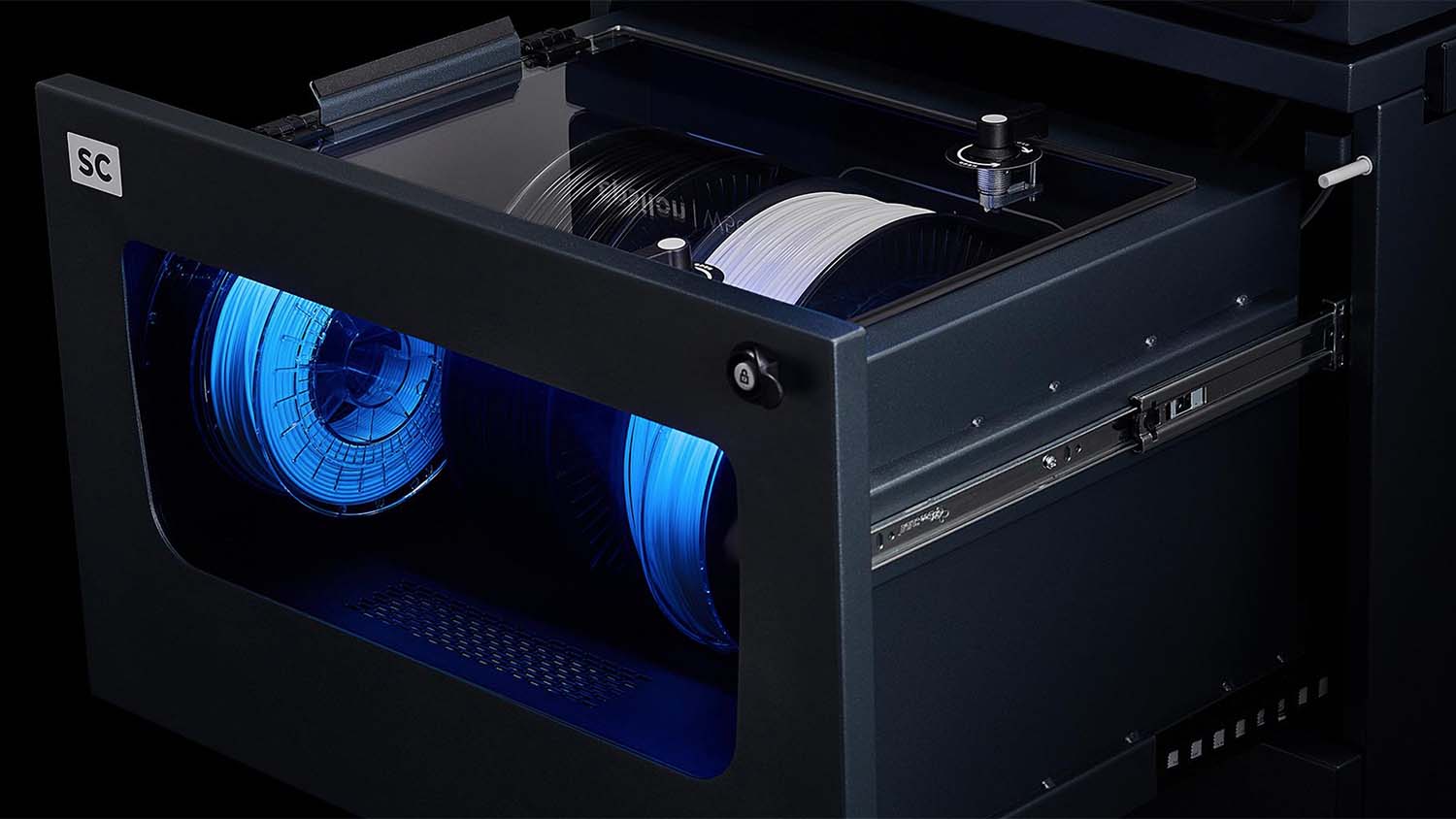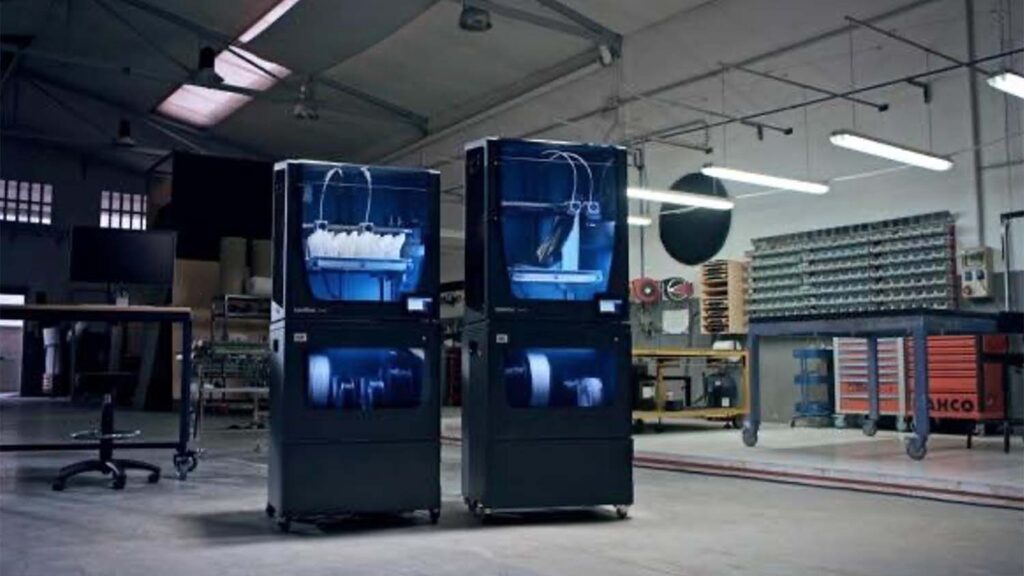The BCN3D Smart Cabinet has been launched, offering optimal humidity levels for 3D Printing filaments, and completing the brand’s Epsilon ecosystem of bench top 3D printers – the Epsilon W27 and Epsilon W50.
The BCN3D Smart Cabinet relies on smart drying technology to ensure that filaments are consistently kept at optimal humidity levels, guaranteeing the best results in for print job and helping protect against print failure and nozzle clogging.
The cabinet works on the absorption dryer method, alternating between drying cycles and regeneration cycles to maintain a constant dry environment around the stored spools and protect them from any sudden external changes.
The BCN3D Smart Cabinet controls relative humidity inside the air-tight container through a desiccant that absorbs moisture, in this case, alumina-based pellets, which are open to the dehumidifying environment.

By isolating the absorption material from the heating chamber and increasing its temperature, the absorbed humidity is released outside of the chamber and the material is regenerated.
After the purge, the desiccant has been refreshed and is ready to collect more moisture.
The air-tight container and cyclical internal ventilation through the fan, heat, and valves, means there is no user interaction required.
In addition to the filament humidity control, an Uninterruptible Power Supply (UPS) protects the print job at all times, eliminating the risk of losing a print job due to power outages.
“The Smart Cabinet draws attention to the important fact that, in order to get fine, repeatable parts, it is crucial to control the whole printing process, which includes ensuring the materials are in optimal conditions,” explained BCN3D CTO Eric Pallarés.
“All materials are sensitive to humidity to a certain degree, but some of them, like PA, TPU, or BVOH are especially affected by it. For example, on a humid day, a spool of PA can absorb the amount of water that makes printing issues appear in a few hours, in less than a day.
“When customers struggle printing PA, wasting time and money on failed or defective print jobs is not because of the printer, or because of the profiles, but because of the degradation of the materials. So to really unlock the potential of AM with technical materials, beyond PLA, a solution like the Smart Cabinet is mandatory.
Pallarés added: “As the 3D printers increase in terms of volume, the printing times also grow… so in industrial or lab contexts, where power outages or micro-cuts are quite frequent, the Smart Cabinet offers life-saving protection to reduce waste and improve efficiency.
“As a result, any customer aiming both with technical materials will benefit from this new product. It should be noted that in the filament PA, for example, some mechanical properties improve by 20% with the use of the Smart Cabinet.”






